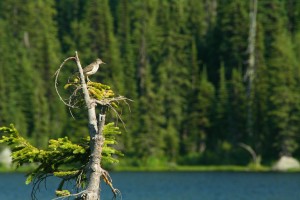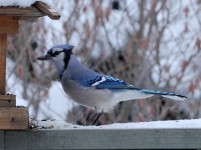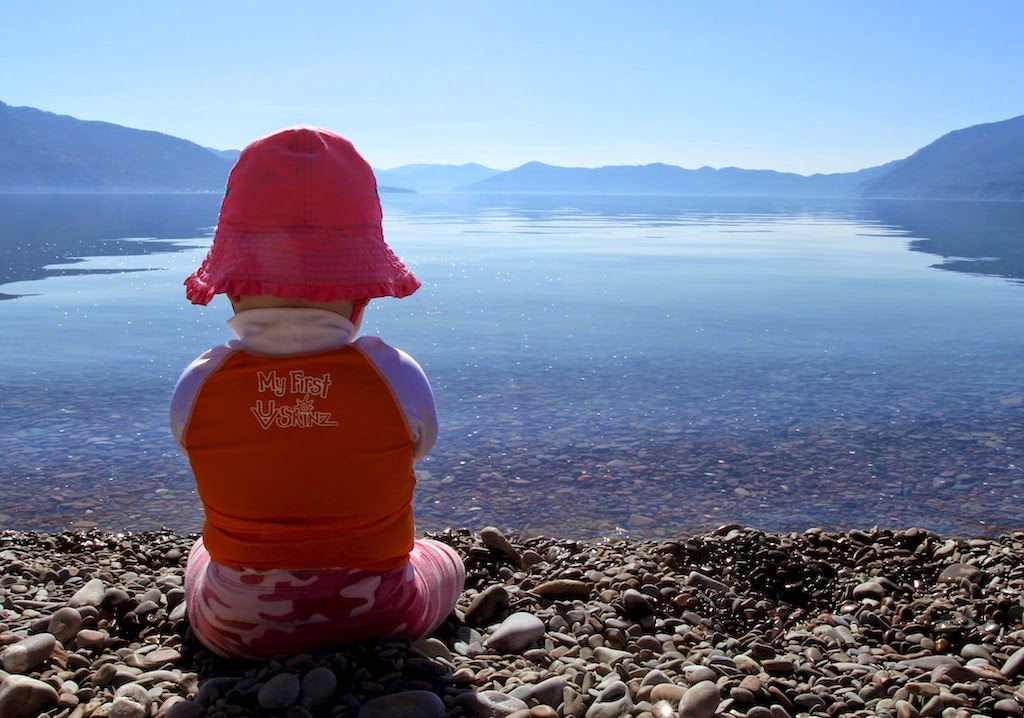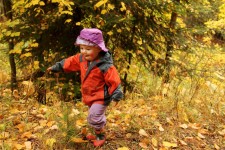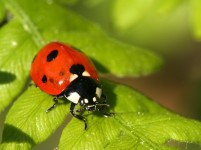Boundary County has a few shorebirds and one can be found from the shorelines of the Kootenai River to high mountain lakes like West Fork Lake and Pyramid Lake–the spotted sandpiper.
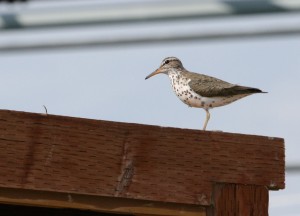
During breeding season the spotted sandpiper has bold dark spots on its white breast (with females having larger spots) and an orange bill. In winter, they have a yellow bill and no spots on their belly.
Shorebirds can be difficult to distinguish especially when they are numerous along the coast. The spotted sandpiper is easier with its brown back and head, white belly with spots, and white stripe above the eye.
Living on the shores of streams, rivers, ponds and lakes, the spotted sandpiper is one of the most widespread breeding shorebirds in the United States. The sandpiper breeds across most of North America and spends winters on the coastlines of North America or south from Central America to South America.
Often you’ll find shorebirds in flocks but not the spotted sandpiper. The spotted sandpiper is mainly solitary even during migration.
What sets the spotted sandpiper apart from most other birds is the female practices polyandry—meaning she mates with multiple males. Female spotted sandpipers will mate with up to five males in one summer if that many males are available.
In the spring, the female arrives at the breeding grounds before the male and establishes a territory. Males begin to arrive several days later and the female performs courtship displays to attract males–the opposite of most birds. Males mating with the female establish smaller territories within the female’s territory to defend against other males.
Once mated, both the male and female build a nest (a small grass-lined depression under a plant). The female lays the eggs and then the male incubates them. If more males are available to mate, the female leaves the male to incubate and raise the young. Otherwise, the female may help with incubation.
Part of the parental care role reversal is due to the levels of prolactin in the male. Males tend to have more prolactin (a pituitary hormone) than females and prolactin promotes parental care.
Males watch over the young the first four weeks. During the first few days the male protects and keeps the young warm. The young can walk and eat within the first day and within one to two days they can hunt for immobile food. Then in three to five days they are stalking moving prey.
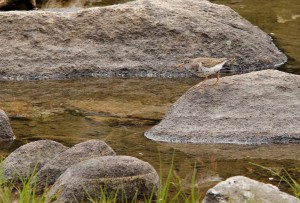
When taking off from shore, spotted sandpipers emit a few high whistled notes. All calls sound like a weet but with different volumes and speeds.
Spotted sandpipers eat a variety so finding ample food is usually not a problem. They eat grasshoppers, beetles, crickets, spiders, worms, snails, small crustaceans, midges, mayflies, fly larvae, small fish, bits of carrion and other invertebrates.
Their varied diet is feasible because they forage in several ways. They pluck food from the surface of the water, ground or plants. They probe the sand and mud with their bill. They snatch flying insects. They also pluck food from shallow water.
Spotted sandpipers forage on the move. They walk quickly, crouch low and then dart towards moving prey all while bobbing their tail and walking with a teetering gait.
Even the youngest sandpipers exhibit a teetering gait. Only when the sandpiper is alarmed or courting does the teetering stop. The teetering gait lends the spotted sandpiper to be called teeter-peep, teeter-bob, teeter snip and tip-tail.
No matter what name you call the spotted sandpiper, you’ll find it teetering along the shores of our lakes and rivers in summer.

